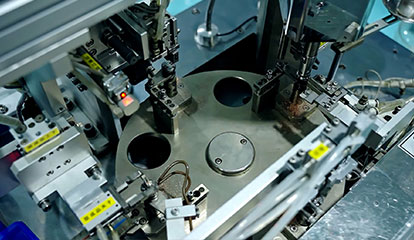
Electromagnetic buzzer and piezoelectric buzzer are significantly different in application scenarios due to their different working principles and characteristics. The following is a comparison and detailed analysis of the use scenarios of the two:
1. Electromagnetic buzzer
Principle: The vibrating diaphragm is driven by an electromagnetic coil to produce sound, and an external circuit is required to provide an alternating signal (such as a square wave).
Peculiarity:
The volume is high (up to 85dB or more), and the low frequency response is good (suitable for low alarm sounds).
High power consumption (continuous current is required to drive the coil).
The structure is simple but the volume is large, and the space for the drive circuit needs to be reserved.
Typical use scenarios:
Industrial equipment
PLC controller, machine tool status prompt (such as start-up, fault alarm).
Industrial sensors (e.g. temperature and humidity overrun alarms).
Security & Alarm Systems
Smoke detectors, intrusion alarms for access control systems (need to penetrate ambient noise).
Automotive electronics
Reversing radar sound, seat belt failure warning (high reliability required).
Household appliances
Microwave oven completion prompt, washing machine failure alarm (need to be clearly audible).
Advantageous Scenarios:
Loud or low-frequency alarms are required (e.g. outdoor equipment, noisy environments).
Cost-sensitive but not power-sensitive (e.g., one-time alarm devices).
2. Piezoelectric buzzer
Principle: Using the inverse piezoelectric effect of piezoelectric materials, AC voltage is applied to directly produce deformation sound.
Peculiarity:
Low power consumption (no coil required, microampere current can be driven).
Small and thin (thickness can be as low as 1mm), suitable for high-density PCBs.
Good high-frequency response (good for high-pitched tones), but low volume (typically 60-75dB).
Typical use scenarios:
Consumer electronics
Mobile phone button feedback, smart watch notification prompt (compact design required).
Bluetooth headset pairing success prompt (low power consumption requirement).
Internet of Things (IoT) devices
Status Alert for Smart Door Locks, Sensor Nodes (Battery Optimization).
Medical equipment
Confirmation of operation of micro pump and blood glucose meter (silent environment compatibility required).
Toys with micro drones
Micro robot interactive prompt, drone obstacle avoidance alarm (need to be lightweight).
Advantageous Scenarios:
Low-power, small-footprint design is preferred (e.g., wearables, portable devices).
High-frequency or diverse tones (e.g., musical cues, multi-state discrimination) are required.
3. Comparison and selection suggestions
Features Electromagnetic buzzer Piezoelectric buzzer
Volume High (85dB+) Low (60-75dB)
Power consumption: High (continuous current required) Low (microampere drive)
Large volume (coil and diaphragm required) Extremely small (suitable for SMT)
Driving complexity: Requires an external oscillation circuit, which can be self-oscillating or externally driven
Lifespan Mechanical vibrating parts are easy to age No mechanical parts, longer life
Cost Low (simple structure) High (piezoelectric material cost)
Selection suggestions:
Priority electromagnetic: Scenarios that require high volume, low-frequency alarms, and are cost-sensitive.
Priority piezoelectric type: Scenarios that require low power consumption, ultra-thin design, and high-frequency prompt tones.
Special requirements: For multi-tone or musical cues, complex waveforms can be generated by combining piezoelectric and microcontrollers.
By combining specific requirements (e.g. space, power consumption, volume, cost), the right buzzer type can be selected more precisely.
